I call this Otter Gap. When visiting, if you suddenly see aquatic birds scrambling to leave the area, the chances are good that there are North American River Otters hunting nearby.
The tip of land on the left is part of Marsh Island and to the right is Foster Island. The Waterfront Trail bridge spans the gap, at least for now. (Click on the highlight to learn more about the potential bridge and trail replacement.) To pinpoint this location on a map of Union Bay Click Here and then zoom in.
Aquatic birds appear to fear the otters more than eagles. I suspect it is because the otters can approach from underwater, remaining completely hidden, until it is too late for a bird to escape.
On the other hand, I have only seen the otters eating fish.
I suspect a beauty contest between otters, birds, and fish would be easily won by the birds. However, the otter's lack of brilliant coloring makes sense. Their most exceptional senses are their hearing and their sense of smell. They are often underwater in places with limited visibility, where bright colors might warn away their prey.
In fact, their whiskers may be more valuable than their eyesight when it comes to catching fish in the dark. It makes sense that brilliant good looks to attract a mate, who does not see well, is not a logical priority.
Another important, but easily overlooked, physical attribute of otters is the webbing between their toes. If you take a second look at the photo above, just below the surface you can faintly see triangles of light-colored webbing between the brightly-colored toenails. Normal swimming is apparently powered by their feet, for occasional bursts of speed or sudden changes of direction, they utilize their powerful tails.
Their ears and nostrils automatically close when they submerge according to the information in Wikipedia. Their thick fur tends to shed water and keep them quite warm. In every way, they are a perfect example of form fitting function.
With somewhat larger fish they are likely to head for shallow water.
With very large fish they pull them onshore.
Medium-sized fish they will sometimes eat like an ice cream cone.
Smaller fish, which they can more easily control, are consumed while sticking their heads above water and chewing. Given the width of their necks, and how extensively they chew their food, the inner part of their throats must be surprisingly restrictive.
For comparison, a Great Blue Heron has a much narrower neck, however herons simply swallow their fish whole. Without teeth, the herons don't have the option of chewing, plus I suspect their digestive acids are far stronger. I have also seen a heron's neck nearly double in width to allow a large fish to pass through. The variety in nature's fish-eating solutions is amazing.
Curiously, whenever there were no people on the walking bridge, the otters were quite comfortable with utilizing the structure. They also seemed surprisingly social. They went out of their way to gently touch each other.
This same closeness also occurred in the water, during which neither otter shied away from the experience.
During their first winter, the young stay close to their mother and I suspect the three I saw this week were a mother and two young. It seemed to me that the "younger" two might have had shorter whiskers.
I also suspect it was the two young who were galavanting around on the bridge deck.
It is interesting to compare their bodies with that of a Long-tailed Weasel.
They are both in the same family. Both have short legs and long necks. Both are predators that can chase prey into dark hidden places. Both have long streamlined bodies and large pointed snouts containing keen olfactory capabilities. Of course, River Otters can weigh as much as thirty pounds while a Long-tailed Weasel is listed as less than eight ounces.

This otter continually kept its nose less than an inch above the deck surface. I suspect it was logging a history of scents.
I am not sure if the purpose behind rubbing the surface was to leave a scent, pick up a scent or simply squeeze water out of its fur.
At one point it turned and did some personal grooming in the area right above its tail. (Don't try this at home. You might hurt yourself.)
The otter's maneuver reminded me of a Belted Kingfisher I saw a week earlier.
The Kingfisher also has short legs which cannot reach its back.
To groom its tail or lower back it must use the flexibility of its neck and its long bill. Once again nature solves a similar problem in a slightly different manner.
The kingfisher also uses its bill to groom its wings, which is not an otter issue.
While maybe not as gorgeous as birds, I do find otters oddly compelling with their streamlined bodies, fluid motions, and gentle social behaviors.
By the way, otters are one of the local carnivores whose sightings are being recorded and studied by the Woodland Park Zoo. Click Here to participate.
Have a great day on Union Bay...where nature lives in the city and Black Birders are welcome!
Larry
Going Native:
Each of us, who breathe the air and drink the local water, needs to watch and protect our local environment. Native plants and trees encourage the largest diversity of lifeforms because of their long intertwined history with our local environment and native creatures. I have been told that even the microbes in the soil are native to each local landscape. I hope we can inspire ourselves, our neighbors, and local businesses to respect native flora and to support native wildlife at every opportunity. I have learned that our most logical approach to native trees and plants (in order of priority) should be to:
1) Learn and leave established native flora undisturbed.2) Remove invasive species and then wait to see if native plants begin to grow without assistance. (When native plants start on their own, then these plants or trees are likely the most appropriate flora for the habitat.)3) Scatter seeds from nearby native plants in a similar habitat.4) If you feel you must add a new plant then select a native plant while considering how the plant fits with the specific habitat and understanding the plant's logical place in the normal succession of native plants.
Click Here to access a King County publication that explains the best placement for a wide variety of native plants. It looks extremely helpful.
Also, my friend Tom Brown pointed out that the application named 'Wildflower Search' is very helpful. Click on the highlighted link to see for yourself.
Also, Jane Lundin has created a small package, with a lot of critical information that looks quite handy, and light, for backpacking in the mountains in Springtime. It is titled, Mountain Wildflowers of Washington.)
Another idea that integrates perfectly with living in harmony with nature is the concept of Forest Gardening. Native Americans collected and nurtured dense multi-layered gardens of native herbs, plants, shrubs, and trees that produced food and herbal medicines. Even after 150 years of no maintenance, the gardens are essentially intact and the diversity of life remains significantly higher than in the surrounding forests. Click Here to learn more.
**************
In the area below it is my intention to display at least one photo each week to help challenge us to know the difference between native and non-native lifeforms.
Scroll down for the answer.
****************
Greater White-fronted Goose: Yes, Greater White-fronted Geese (GWFG) do qualify as natives, however, maybe not in the way one might expect. They does not breed here and most of them do not winter here. Their breeding grounds surround the Arctic and they generally winter to the south of Washington state.
Birdweb has an interesting monthly chart that specifies their presence in the Puget Trough. The chart shows them as:
- fairly common during migration (i.e. April, September, and October),
- nonexistent during the breeding season (i.e. June and July) and
- uncommon in every other month.
This year's Seattle Audubon Christmas Bird Count results implied that on average of seven GWFG are usually seen in Seattle during the event. This year the number was twenty. I wonder if the increase in GWFG wintering in Seattle is statistically relevant? Is it just normal variation in behavior or an indication of wintering grounds beginning to move north as a result of climate change?
The bird in the photo above was one of four that have been seen at the Montlake Community Center during the last week. Thank you to Steve Hauschka for alerting me to their presence!
Here are a couple of other previous local sightings of GWFG:
*****************
The Email Challenge:
In response, I have set up my own email list. With each post, I will manually send out an announcement. If you would like to be added to my personal email list please send me an email requesting to be added. Something like:
Larry, I want to see more of nature. Please add me to your personal email list.
Thank you for your patience and interest!
Another common issue is losing your input while attempting to leave a comment on this blog. Often everything functions fine, however, sometimes people are unable to make it past the robot-detection challenge or maybe it is the lack of a Google account. I am uncertain about the precise issue. Sadly, a person can lose their comment with no recovery recourse.
My email address is:
LDHubbell@comcast.net
*******************
The Comment Challenge:
Bottom Line:
If you write a long comment, please, copy it before hitting enter. Then, if the comment function fails to record your information, you can send the comment directly to me using email.
My email address is:
LDHubbell@comcast.net
Sincerely,
Larry
*******************
Final Photo:


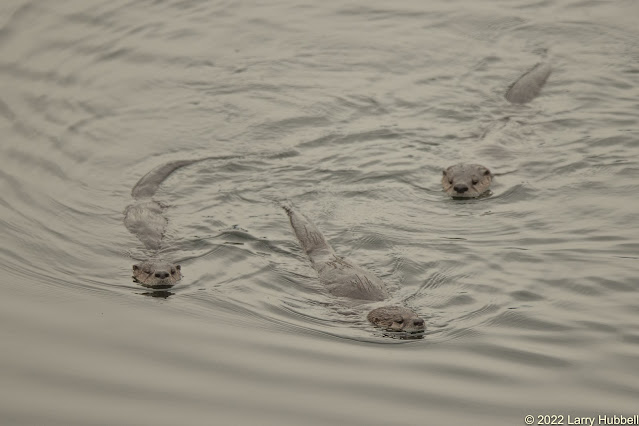



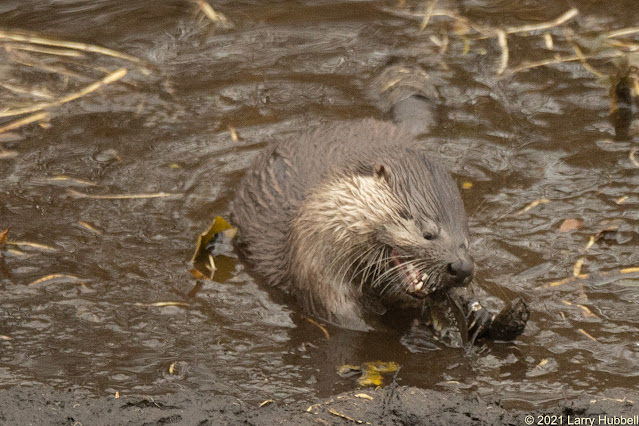
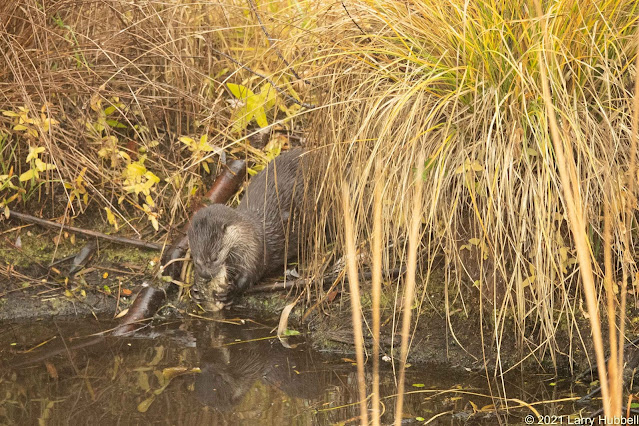

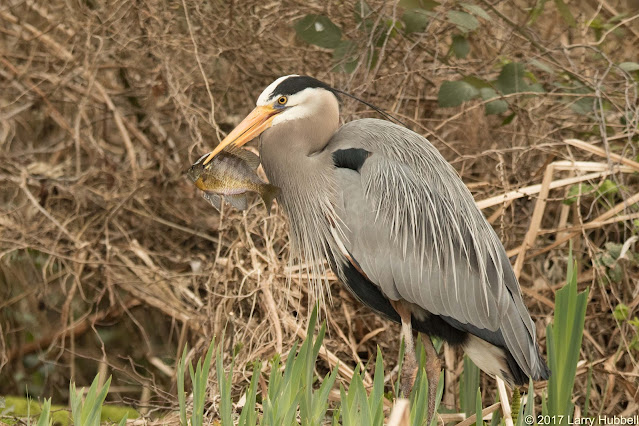





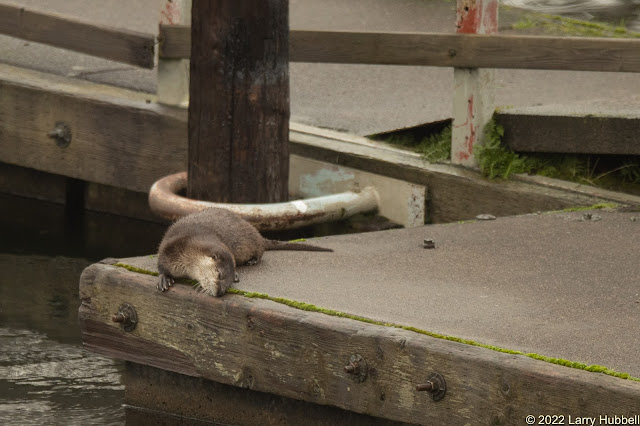



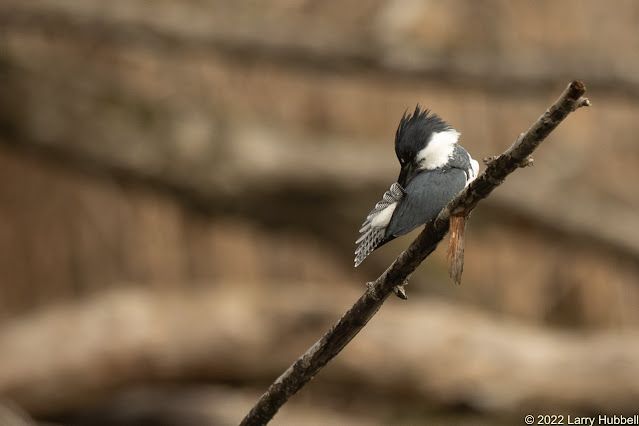

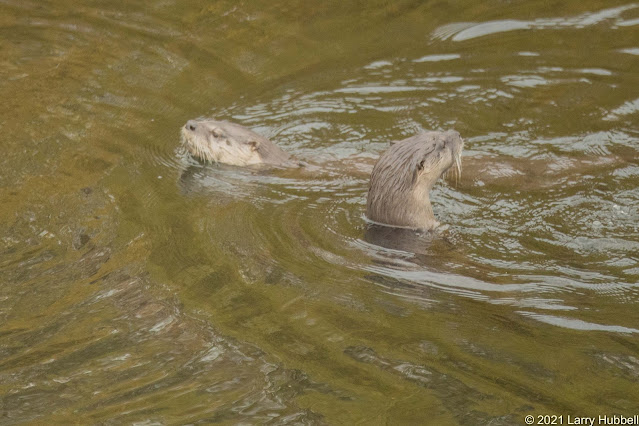




Love your otter pictures..and comments
ReplyDeleteThank you!
DeleteI really like otters. Great Pix! I saw an otter several years ago in Carkeek Park. It was at dusk and I noticed some movement on the bank above Pipers Creek near where tributary Venema Creek spills into it. All of a sudden a large otter dove into Pipers, then proceeded upstream and into the culvert. I hadn't realized it before, but obviously they swim in salt water Puget Sound to travel between their fresh water habitats.
ReplyDeleteVery interesting! What an exciting encounter. Thank you for sharing.
Delete